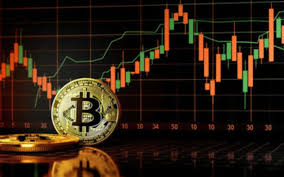
The Importance of Crypto Trading Timing
In the fast-paced world of cryptocurrency, timing is critical. The right entry and exit points can make or break your investment success. Understanding crypto trading timing is essential for both novice and experienced traders. By learning how to navigate the complexities of market trends and price fluctuations, you can enhance your trading strategy significantly. For more resources on this topic, Crypto Trading Timing visit website.
Understanding Crypto Market Dynamics
The cryptocurrency market operates 24/7, unlike traditional stock markets, which have set trading hours. This continuous operation leads to significant price volatility and rapid fluctuations that traders must account for. Prices can spike or drop drastically in a matter of minutes due to various factors, including market news, social media trends, and even macroeconomic events.
Understanding the dynamics at play requires a combination of technical analysis — using historical price charts and trading volumes — and fundamental analysis — assessing the underlying forces impacting the market. Both analyses combined provide traders with a clearer picture of when to enter or exit trades.
The Importance of Timing in Trading Strategies

Timing can vary by strategy. Day traders often look for minute-to-minute changes, while swing traders may hold assets for days or weeks, focusing on broader price movements. Position traders, on the other hand, may hold assets for months or years, taking a longer-term view of market trends. Each of these strategies requires an acute awareness of timing to maximize profitability.
Technical Analysis Tools for Time Management
One of the most commonly used methods for timing trades is technical analysis, which helps traders understand and predict market movements through various indicators and charts. Some popular tools include:
- Moving Averages: These indicators smooth out price data to help identify trends over specific periods.
- Relative Strength Index (RSI): This momentum oscillator measures the speed and change of price movements, helping to identify overbought or oversold conditions.
- Bollinger Bands: These consist of a moving average and two standard deviations that help assess market volatility and identify potential price breakouts.
- Fibonacci Retracement: This tool uses horizontal lines to indicate areas of support or resistance at key Fibonacci levels, assisting traders in identifying reversal levels.
Market Hours and High-Volume Trading Times
While the crypto market never sleeps, certain periods are characterized by higher trading volumes and price fluctuations. Typically, these include:
- Opening Hours of Major Markets: The cryptocurrency market tends to see increased activity when major stock exchanges open, as traditional investors begin to engage with cryptos.
- Weekends and Holidays: Surprisingly, weekends can sometimes lead to increased volatility as retail traders, who may not trade during the week, enter the market.
- Major Announcements: Any significant news related to cryptocurrencies can trigger a flurry of trading activity, leading to unprecedented price movements.

Emotions and Trading Timing
Emotional reactions can heavily influence trading decisions. Fear, greed, and panic selling can lead traders to make hasty decisions that compromise long-term strategies. Maintaining emotional discipline and sticking to a predefined trading plan enables traders to better control timing and avoid costly mistakes.
Developing a Personal Trading Routine
To effectively manage timing, creating a personal trading routine can be beneficial. This may include conducting daily market analysis, setting specific times for executing trades, and establishing triggers for when to buy or sell. By structuring your trading habits, you can better control your timing in the market.
Conclusion: The Value of Timing
Crypto trading timing is undoubtedly one of the most critical components of successfully navigating this volatile market. By applying the strategies mentioned and continuously educating yourself about market dynamics, you’ll be better equipped to make informed trading decisions. The key is to remain patient, stay disciplined, and always keep an eye on the clock and market indicators.
In conclusion, remember that while tools and strategies are essential, the most valuable asset a trader can possess is knowledge — and skills to act on that knowledge at the right time!